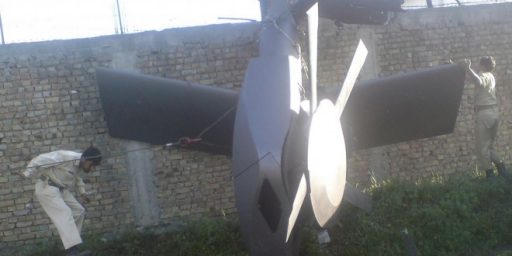Point of Information
There’s a large number of contractors in Iraq, many performing tasks which, in the past, would have been performed by military personnel. I’ve seen some estimates that suggest something like 150,000. How, if at all, does the number of contractors factor into the calculations of adequate troop strength for counterinsurgency operations? How does it factor into the tooth-to-tail ratio?
As usual with these “point of information posts” I’m genuinely looking for information. Are there any informed people out there who can comment on these questions?





Unless you can actually control the contractors my guess is they add nothing.
Take for instance the video of the contractors tooling round baghdad shooting at random people. Certainly those individuals weren’t helping the cause. If anything they’d have to be counted with the insurgents as people promoting instability.
To paraphrase douglas Adams, the main problem with using contractors in a war zone… one of the main problems with… one of the many problems with using contractors in a war zone is that you no longer control your own budget. Once you take a job normally done by uniformed troops & outsource it, that manpower gets tasked to something else, making it next to impossible go back to having troops do it – you’d have to either stop doing what you redrected the troops to do, or ask for more troops. And while the cost of having troops do a given job is fairly constant, as the security situation gets worse, contractors cost more for the same job. And there’s nothing the gov’t can do except pay the bill.
It also completely obscures the number of people (troops or otherwise) needed to do the job… since I don’t think anyone has a real grasp on the number of contractors in Iraq, or the various jobs they’re doing, there’s literally no way to estimate the strength level needed to accomplish any given goal there. As supporting evidence, examine the thousands of AF and Navy personnel in Iraq doing (ostensibly) Army and Marine support jobs…
Dave – somewhere in Petraeus’ testimony before the Senate he discusses them and, as I recall, they are a part of the surge math.
The other thing you have to bring into the discussion is a lot of the contractors are doing things that in an earlier day the army would have contracted for in the local economy. I was a dependent in Germany in the 1950s and the German national did things like driving buses and trucks and serving food that we are now having contractors bring in foreign workers to do.
I know there were security considerations, but think about how much of a boost to the local economy it would have been to have hired Iranians for these jobs in the first place.
We give Haliburton $200,000 to pay an American truck driver $75,000 when we could have hired an Iranian for a fraction of this.
I’m not claiming HAL makes a $125,000 profit on this because they do have other expenses but it is not the most rational expenditure.
It is if you’re an HAL shareholder…